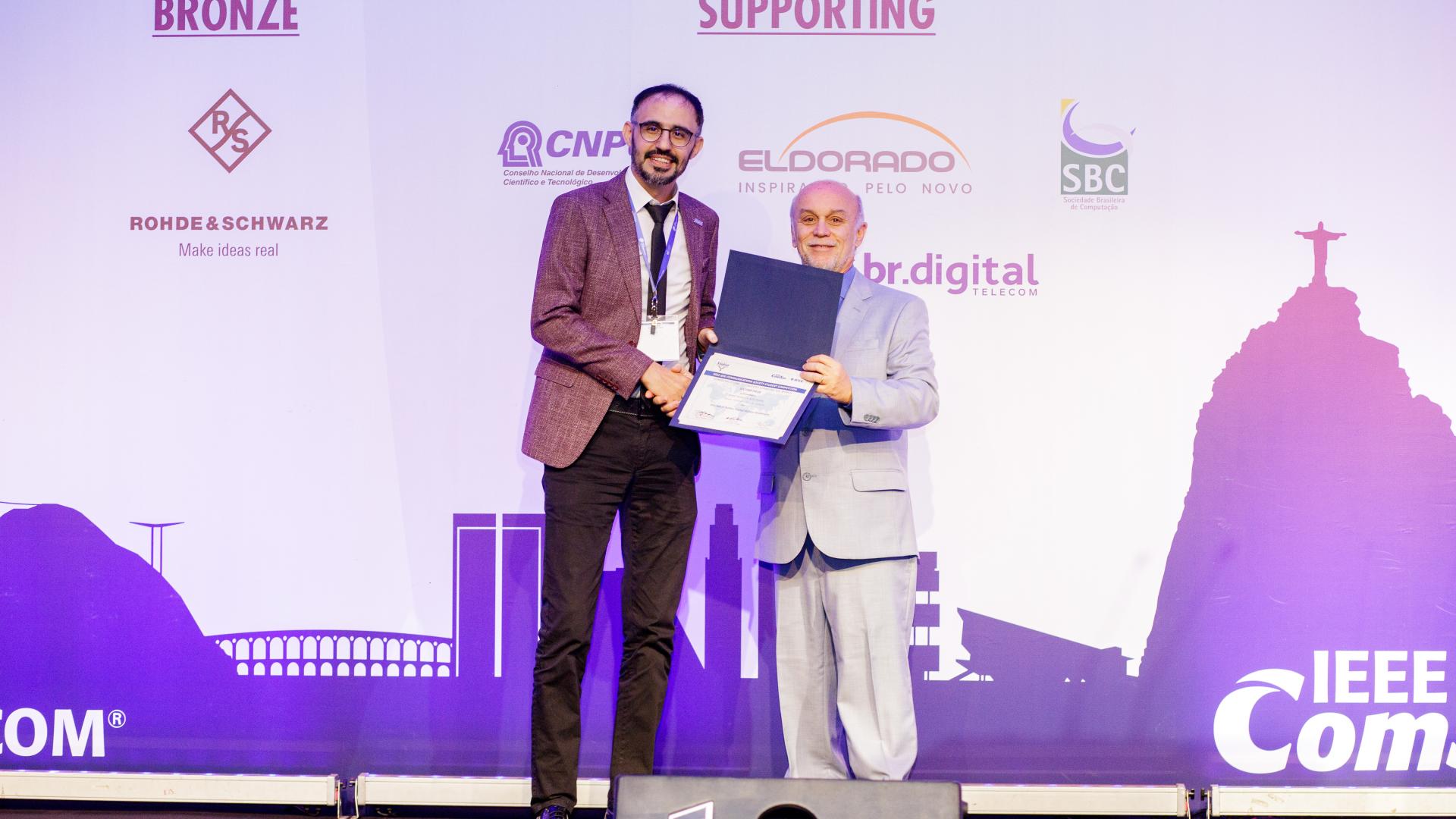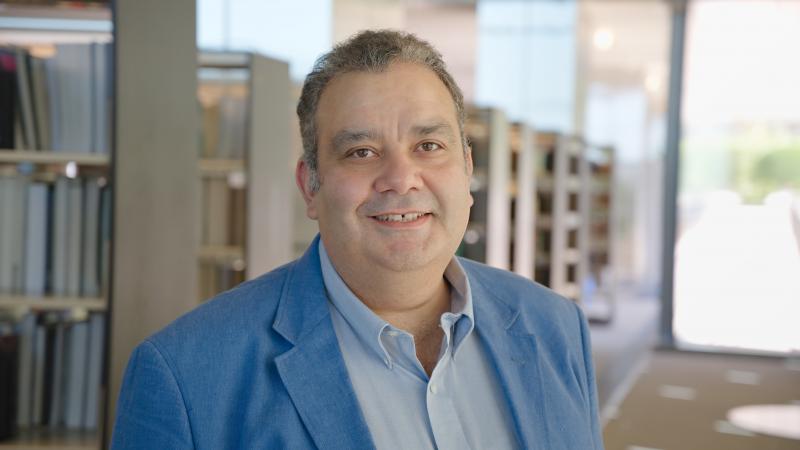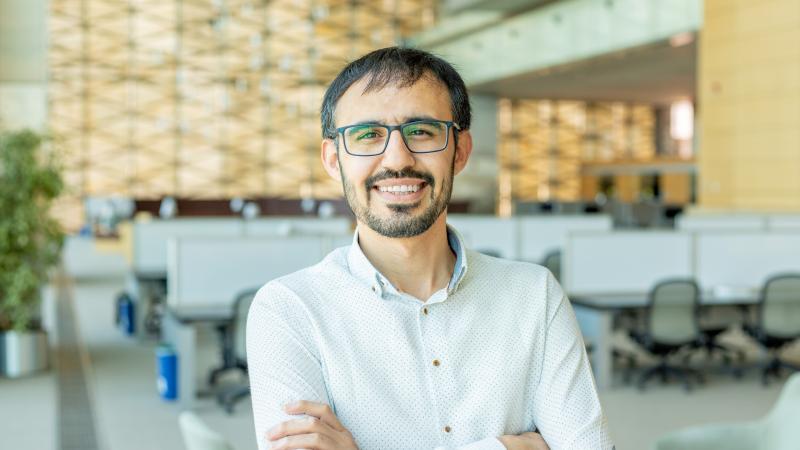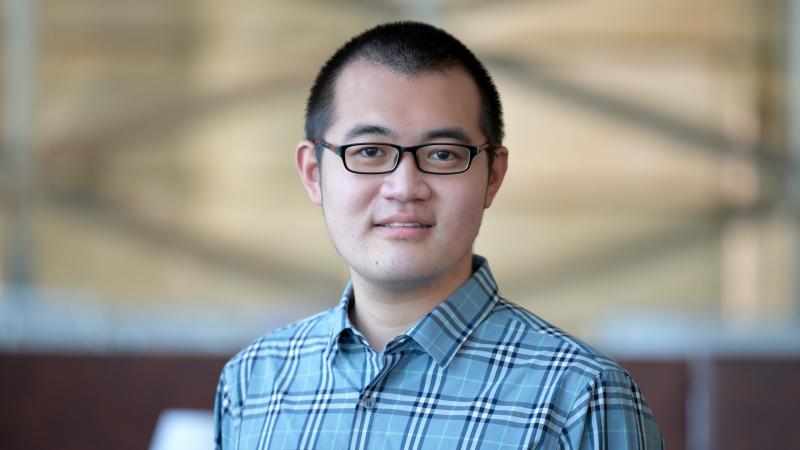By David Murphy
Research work by KAUST electrical and computer engineering students Abeer Alamoudi and Qi Huang has been selected as the second-prize winner of the 2022 IEEE Communications Society (ComSoc) Student Competition "Communications Technology Changing the World."
The IEEE ComSoc event recognizes students or teams of students who utilize communication technology to improve people’s lives and develop projects that meet their needs.
Competition winners were officially recognized at the flagship conference for the IEEE ComSoc, the 2022 IEEE Global Communications Conference (GLOBECOM), held from December 4 to 8 in Rio de Janeiro, Brazil. Dr. Abdulkadir Çelik, the principal research scientist on the students' award-winning project, received the award at GLOBECOM on behalf of the research group.
The student competition received 67 submissions from universities around the world. Competition entries were then evaluated by an international committee of 54 experts covering all aspects of interest to ComSoc. The submissions underwent two rigorous selection rounds based on evaluating five aspects: social impact, technical content, originality, practical applicability and results and presentation quality.
“I feel very excited to get this award and see my work highly recognized by the experts in the field,” Qi said of their award. “Moreover, I really appreciate the help from my advisor, mentor and colleagues.”
“We are honoured and happy that our work resonated with the committee members from a technical and social impact point of view, qualifying us for second place prize,” Alamoudi added.
Bridging health and engineering in the Internet of Bodies field
Alamoudi is a Ph.D. student, and Huang is a master’s student in the KAUST Electrical and Computer Engineering program under the supervision of Professor of Electrical and Computer Engineering Ahmed Eltawil. Their project, "Internet of Bodies: Digital Holistic Healthcare," bridges health and engineering in the Internet of Bodies (IoB) field.
As members of Professor Eltawil’s Communication and Computing Systems Lab, their research primarily focuses on investigating how novel wireless communication architectures and platforms can be designed to have direct societal benefit. They achieve this by democratizing access to preventive and proactive healthcare solutions, utilizing IoB as a medium.
Çelik explained that IoB is an emerging technology set to empower sustainable and scalable digital healthcare systems: “The IoB is a network of near-body, on-body or in-body sensor nodes that can communicate at ultra-low power with the goal of seamlessly monitoring an individual’s health.”
The students' project aims to establish an ultra-low power healthcare monitoring system by interconnecting the biosensors distributed over the body. The biosensors collect the biomedical data transmitted through the human body—which acts as a transmission channel—and reports the data to a remote medical center for further processing and diagnosis.
Alamoudi’s research is focused on establishing self-sustainable IoB sensor nodes by investigating different communication access schemes and energy harvesting techniques to power the system, while meeting the diverse quality-of-service (QoS) requirements expected at the application level.
Qi’s research, on the other hand, focuses on building circuits, or HBC transceivers with commercial off-the-shelf components, for human body communication. It aims to establish a healthcare monitoring system based on HBC, which has low power, excellent energy efficiency, and high bandwidth and satisfies the related safety regulations.
A second goal is to characterize the human body path loss under different conditions, including experiment subjects, receiver terminations and environment. As a team, their expertise complements each other, allowing for truly interdisciplinary research.
“I am especially proud of our students and their achievements, starting from ideation to theory and all the way down to prototype development,” emphasized Eltawil. “This ComSoc award is a testament to their creativity and hard work.”
“Awards like this one inspire me to overcome the difficulties I meet in my day-to-day research. They also make me work harder, achieve more results and pursue higher goals. After all, the difficulties and obstacles we meet in life and work are critical elements [that] pave the way to our success,” Qi said.
“We are delighted to receive such recognition because this [award] is a testimony to the quality and importance of our research on an international scale. It motivates me to work harder to address the numerous technical challenges that obstruct the deployment of efficient and practical IoB systems,” Alamoudi concluded.




